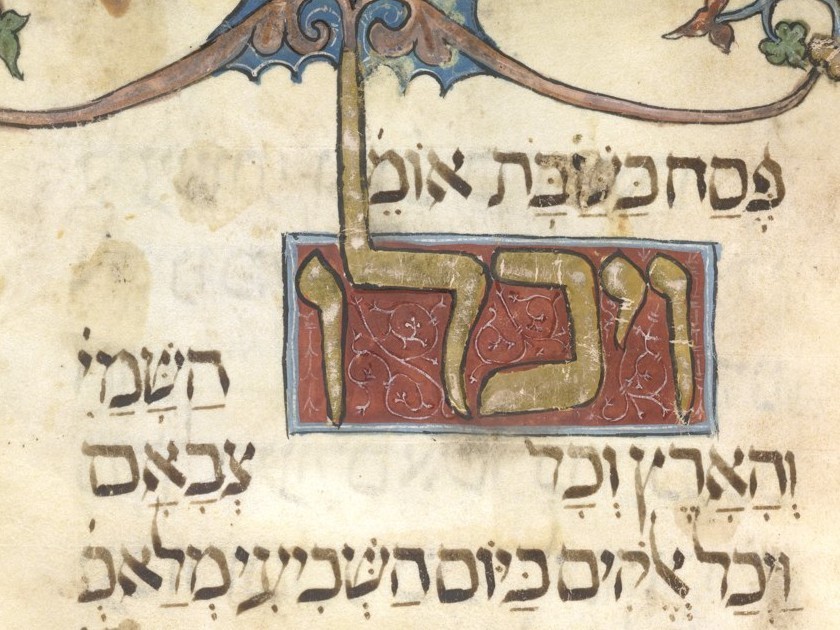
Page of the ‘Sister Haggadah,’ from Spain in the 1300s, British Library
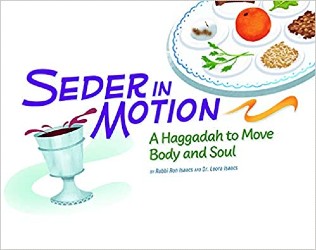
Seder in Motion: A Haggadah to Move Body and Soul
Ron Isaacs, Leora Isaacs, Martin Wickstrom (illus.)
In their introduction to Seder in Motion, the authors invite participants “to fully engage yourself — body, mind, and soul — in the miracle of redemption and freedom that is Passover.”
This haggadah preserves some of the original text but adapts most for a child-friendly retelling of the Exodus. The commentary incorporates family-friendly activities that encourage reflective movement, thinking, and sense perception to draw the reader deeper into personal action with the rituals and readings of the Seder. The authors also suggest activities if members of your Seder are joining you online. The layout of the text is bright and colorful, and its images reflect ethnic and cultural diversity, along with an egalitarian ethic. Seder in Motion is a good choice for families that seek to deeply connect with the meaning of Passover in a holistic, child-centered but adult accessible way. It is appropriate for Passover guests of any age.
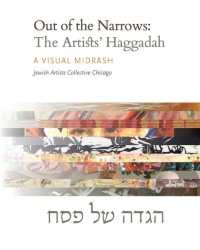
Out of the Narrows: The Artists’ Haggadah — A Visual Midrash
Jewish Artists Collective Chicago
The Jewish Artists Collective of Chicago, founded in 2016, is a community of multidisciplinary artists “joined by a common mission of creating contemporary, engaging, and thoughtful work that reflects Jewish themes and values.”
Out of the Narrows was born out of the desire to connect the themes of Passover with the realities of celebrating the holiday during the COVID pandemic. The Haggadah includes full-color images and thoughtful personal reflections on the artists’ pieces. The pieces are paired with the themes of the rituals and readings of an adapted and abbreviated — but mainly original — text. The Haggadah’s layout is beautifully crafted, as one might expect from a book designed by artists. Out of the Narrows is a visual feast, and is appropriate for adult audiences comfortable with drawing their own discussion from the themes found in the Seder and the accompanying art.
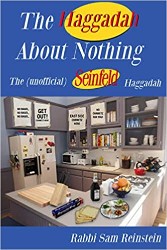
The Haggadah About Nothing: The (Unofficial) Seinfeld Haggadah
Rabbi Sam Reinstein
The Haggadah About Nothing takes its name from the sitcom Seinfeld, described by its creators as a “show about nothing.” Its author, Rabbi Sam Reinstein, is a Modern Orthodox Rabbi and Seinfeld aficionado; he contrasts the purpose of the Seder — to spiritually elevate its participants — to the ethos of Seinfeld, in which the characters never change.
In this juxtaposition, The Haggadah About Nothing encourages us how not to be and underscores the remarkably transformative power of the Seder experience. The author pairs a traditional Haggadah text with excerpts, anecdotes, quotes, and commentary on the characters and episodes of this formative television comedy. As a text-heavy edition, The Haggadah About Nothing is designed for adult audiences that appreciate the intersection of Judaism and pop culture.
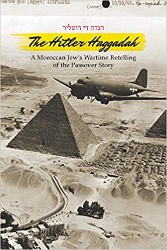
The Hitler Haggadah: A Moroccan Jew’s Wartime Retelling of the Passover Story
Simon Coiffeur
The Hitler Haggadah was composed in Judeo-Arabic by Nissim ben Shimon. Originally published in Rabat in 1943, it is a retelling of the Passover story through the eyes of the Holocaust victims of Nazi Germany’s North African campaign and the devastation brought on North African Jewry.
It also celebrates liberation through the victory of Operation Torch — the Allied forces campaign in North Africa. The book is a multilingual edition, including English and Hebrew translations of the Judeo-Arabic, an introduction to each translation, and commentary by Avishai Bar-Asher, Adi Schnytzer, and Jonnie Schnytzer — academics from Hebrew and Bar Ilan University respectively. It also includes a facsimile of the original text. This Haggadah follows the structure and linguistic style of a traditional Haggadah, more readily recognizable in the Hebrew translation. The Hitler Haggadah is a captivating window into the experiences of North African Jews during World War II, a less-explored dimension of Holocaust history. This Haggadah can be used to supplement your Seder but does not include the original Haggadah text. However, The Hitler Haggadah is a worthy addition to a collection of Passover books and Judaica.
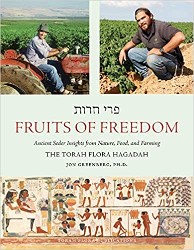
Fruits of Freedom: The Torah Flora Hagadah
Jon Greenberg
Jon Greenberg’s Fruits of Freedom Haggadah is a product of the author’s two loves: agronomy and Torah study. As the Seder is a food-centered ritual, Fruits of Freedom offers explanations from the natural world to “reveal unfamiliar meanings of every detail of the Seder, from the table settings and the menu to the color of the wine and ingredients in the charoset.”
The author deepens and expands our understanding of the Bible and rabbinic world by connecting it to the agricultural and cultural history of these periods — as well as traditional and contemporary Jewish thought. Fruits of Freedom includes the original Haggadah text with a running commentary of additional readings, color photographs, and explanations that expand a reader’s appreciation of how profoundly influenced the Passover Seder, and Judaism as whole, was and continues to be by the world around us.
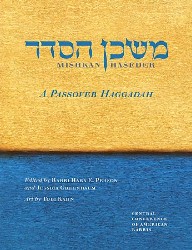
Mishkan HaSeder: A Passover Haggadah
Rabbi Hara Person, Jessica Greenbaum (editor)
Mishkan HaSeder is the newest publication of the CCAR Press Mishkan series of liturgical texts. It follows the format of pairing liturgical text and poetry adopted by the Mishkan series.
As Rabbi Hara Person shares in her introduction, “it became clear that we needed a new Haggadah to add to our ever-growing collection, one using the model already developed in our other liturgical publications…with the familiar Haggadah liturgy on the right side and poetry on the left, again designing a conversation between the historic text of the Haggadah and poems dealing with similar themes or imagery.” The interplay between poetry and liturgy is heightened by the artist Tobi Kahn. The traditional liturgy of the Haggadah is adapted, expanded, and interpreted for a modern audience to build a closer connection and deeper understanding to the themes of Passover. The text also offers a guided experience for participants, opening the opportunity for greater interactivity and collaboration. Mishkan HaSeder is beautifully crafted and visually appealing. It is best suited for an adult audience that is responsive to the written word and sensitive to the interplay between language and the visual arts.